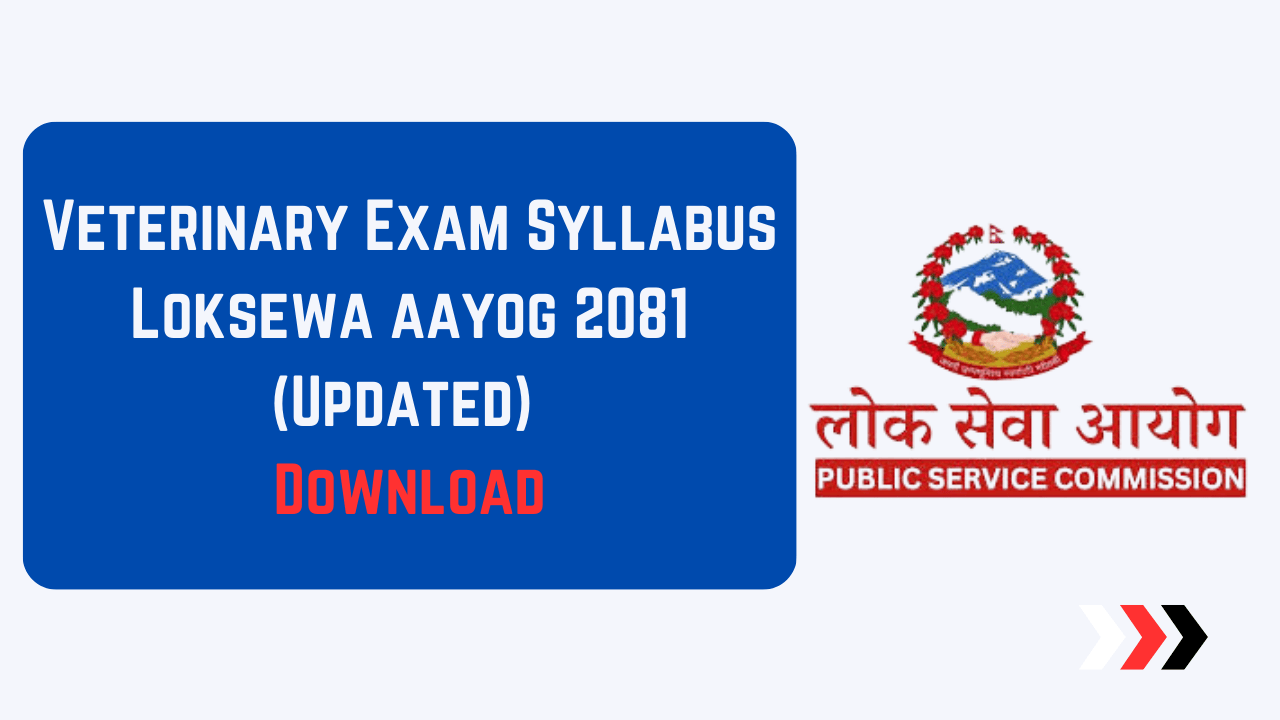The Veterinary Exam, conducted by Lok Sewa Aayog, is essential for candidates aspiring to join Nepal’s veterinary sector. This highly competitive exam evaluates candidates’ knowledge of animal science, veterinary medicine, and related fields. To succeed, understanding the syllabus and exam structure is crucial. This guide provides a complete breakdown of the syllabus and practical preparation strategies to help you excel.
First Paper Syllabus Veterinary Exam
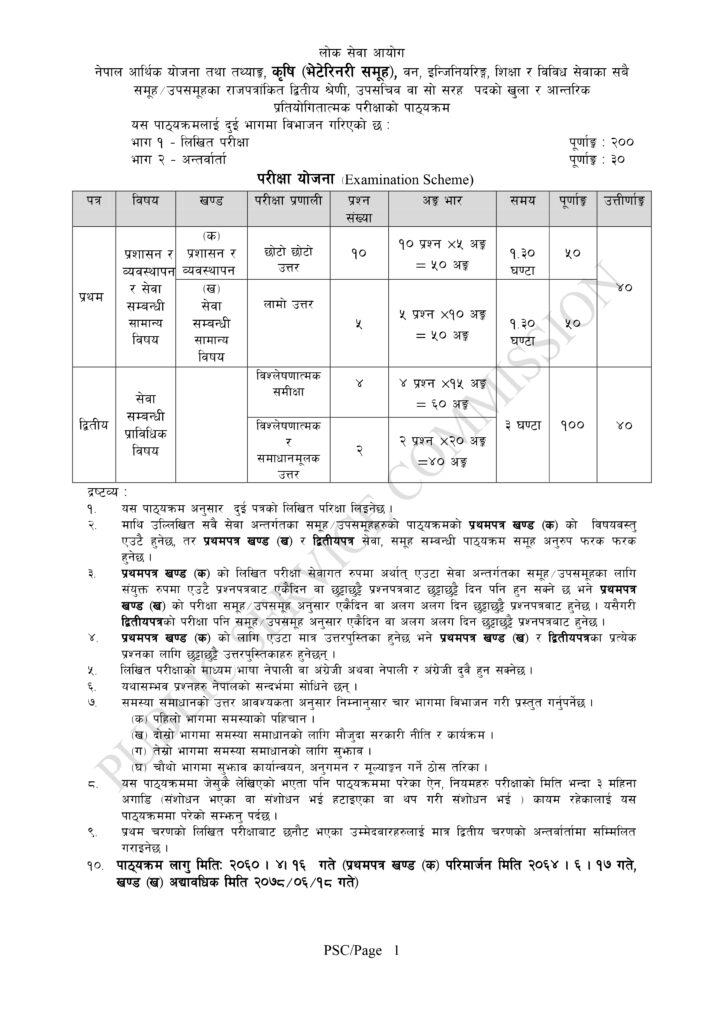

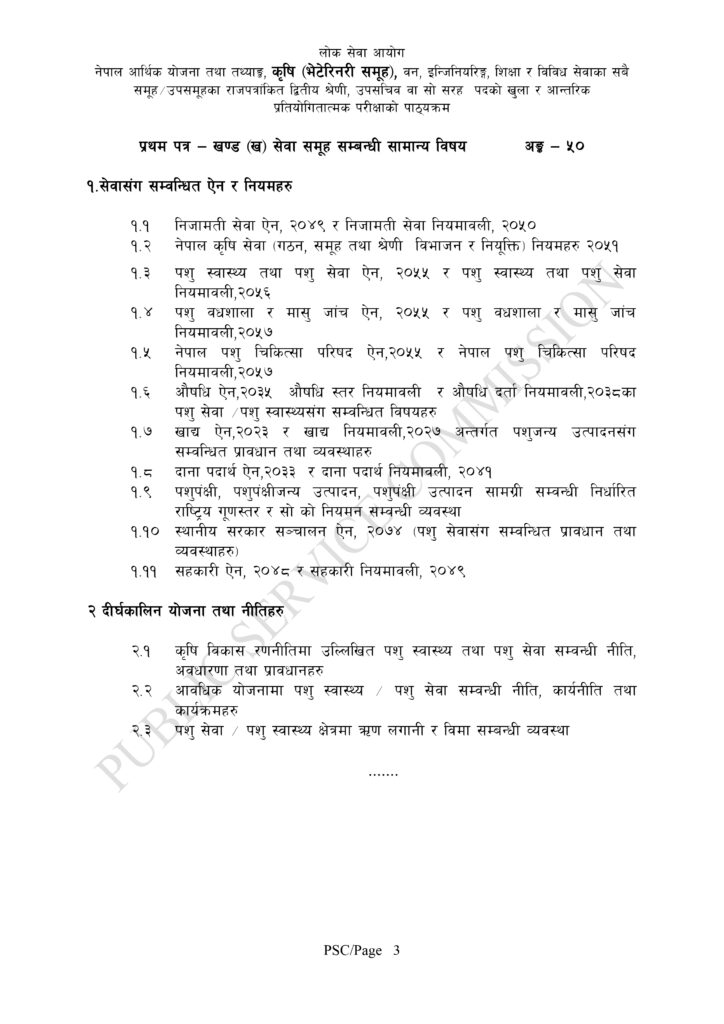
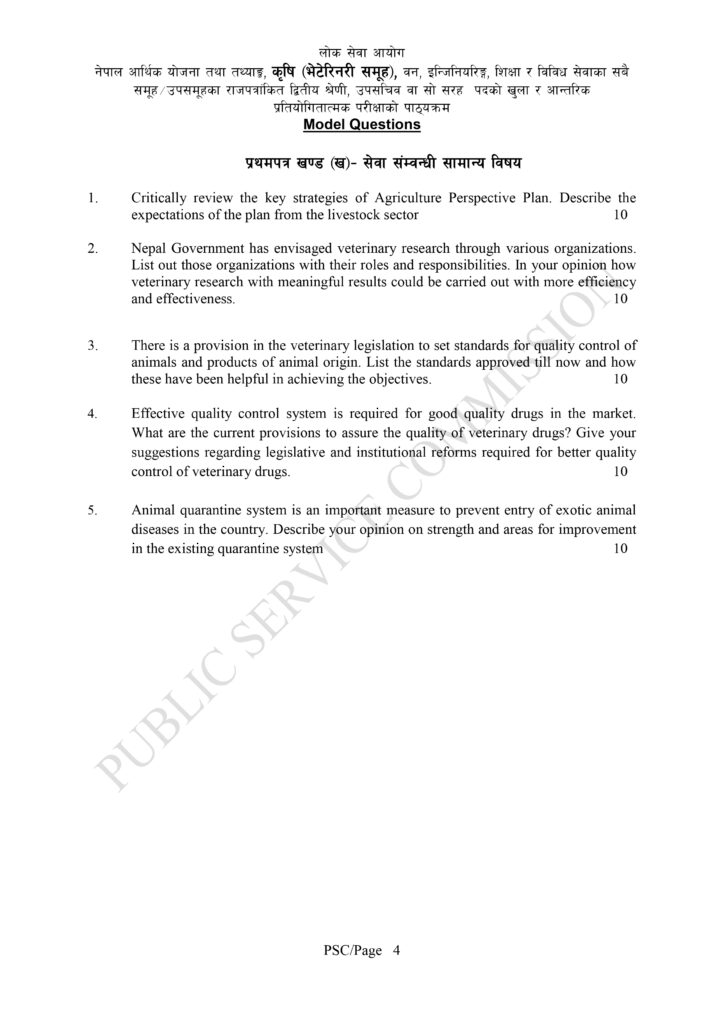
1st Paper: General Knowledge, Veterinary Policies, and Administrative Knowledge
The first paper evaluates the candidate’s understanding of general knowledge, administrative capabilities, and the legal and policy frameworks governing veterinary practice in Nepal.
Key Components:
A. General Knowledge
- Current Affairs
- National and international events, especially those related to agriculture, livestock, and veterinary science.
- Sustainable Development Goals (SDGs) and their relation to animal health and food security.
- Nepalese Context
- Geography, demography, and socioeconomic contributions of the livestock sector.
- Overview of Nepal’s agriculture and livestock production.
- Constitution of Nepal
- Rights and duties related to animal welfare.
- Governance structure, especially concerning agricultural and veterinary services.
B. Veterinary Policies and Acts
- Animal Health and Livestock Services Act
- Regulatory frameworks for disease prevention, animal movement, and quarantine practices.
- Livestock Development Policies
- Government initiatives to boost productivity and welfare in livestock farming.
- Nepal Veterinary Council Regulations
- Ethical guidelines and standards for veterinary practice.
- Import and Export Regulations
- Policies related to the trade of livestock and animal products.
C. Administrative and Management Skills
- Administrative Skills
- Office management and reporting in veterinary services.
- Record-keeping and documentation.
- Livestock Data Analysis
- Tools and techniques for analyzing trends in animal production and health.
- Project Planning and Monitoring
- Designing and evaluating veterinary health programs.
Second Paper Syllabus Veterinary Exam
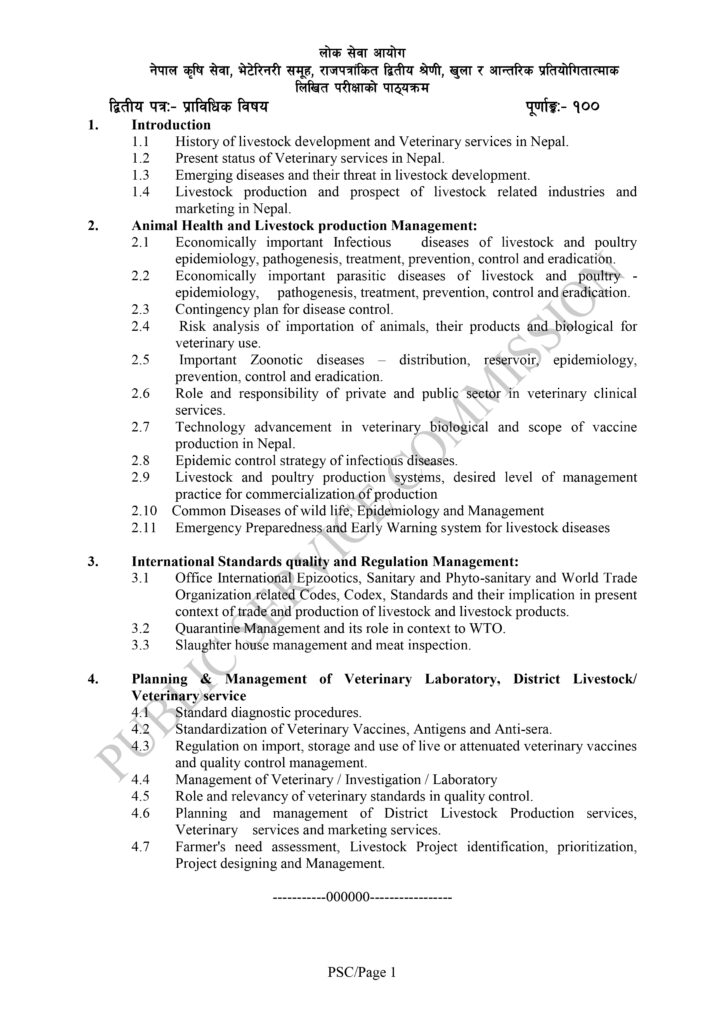
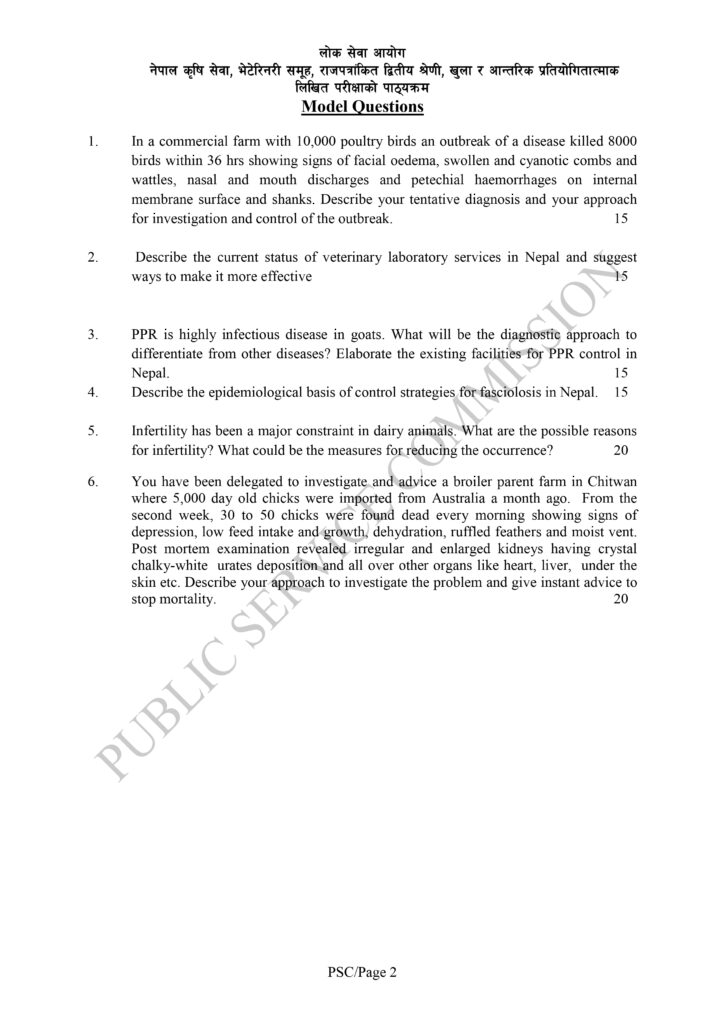
2nd Paper: Technical and Subject-Specific Veterinary Knowledge
The second paper of the veterinary exam focuses on the core scientific knowledge required for veterinary practice, emphasizing both theoretical concepts and practical applications.
Key Components:
A. Veterinary Science Basics
- Animal Anatomy and Physiology
- Structure and functions of various systems (digestive, respiratory, circulatory, nervous).
- Comparative anatomy across species.
- Pathology
- Types of diseases (bacterial, viral, fungal, parasitic).
- Mechanisms of disease development and diagnostic approaches.
- Pharmacology
- Classes of veterinary drugs, mechanisms of action, and dosage calculations.
- Drug regulations and safe usage practices.
B. Animal Health and Management
- Preventive Veterinary Medicine
- Vaccination schedules and biosecurity measures.
- Zoonotic disease management (rabies, brucellosis).
- Livestock and Poultry Management
- Breeding techniques and genetic improvement programs.
- Nutrition and feed formulation for cattle, sheep, goats, and poultry.
- Clinical Diagnosis and Treatment
- Common diagnostic tools (microscopy, imaging, lab tests).
- Surgical and non-surgical interventions.
C. Food Safety and Public Health
- Inspection of Animal Products
- Milk, meat, and egg quality testing.
- Foodborne disease prevention.
- Zoonoses
- Role of veterinarians in controlling zoonotic diseases.
- Surveillance and outbreak management.
- One Health Approach
- Integration of animal, human, and environmental health initiatives.
D. Veterinary Technology
- Reproductive Technology
- Artificial insemination and embryo transfer techniques.
- Fertility management and gestation monitoring.
- Diagnostic Technology
- Advances in diagnostic imaging (X-rays, ultrasound).
- Laboratory diagnostics for blood, urine, and tissue samples.
- Digital Tools in Veterinary Practice
- Use of software for livestock management.
- E-health initiatives for rural veterinary services.
E. Wildlife and Aquatic Veterinary Science
- Wildlife Health Management
- Common diseases in wildlife and their conservation.
- Veterinary involvement in anti-poaching and rehabilitation.
- Aquatic Animal Health
- Fish diseases and their management in aquaculture.
- Sustainable practices in aquatic farming.
Preparation Tips for Both Papers
1. For the 1st Paper:
- Stay Updated: Follow news on national policies and global trends in veterinary science.
- Study Policies: Review laws, regulations, and policy documents related to animal health and welfare.
- Practice Writing: Practice concise and clear writing for essay and subjective questions.
2. For the 2nd Paper:
- Deepen Technical Knowledge: Study standard textbooks on veterinary anatomy, pharmacology, and pathology.
- Practical Skills: Engage in hands-on training to master clinical and diagnostic skills.
- Mock Tests: Solve past papers and case studies to enhance problem-solving abilities.
Conclusion
The Veterinary Exam 1st Paper and 2nd Paper Syllabus for the Lok Sewa Aayog exam reflects a comprehensive evaluation of a candidate’s capabilities. While the 1st paper focuses on general knowledge, policies, and administrative skills, the 2nd paper delves into technical expertise and practical applications. Understanding the syllabus thoroughly and adopting an effective preparation strategy will significantly boost your chances of success in this competitive exam.
Frequently Asked Questions
Q1: What is the eligibility for the Lok Sewa Aayog veterinary exam?
A1: Candidates must have a degree in veterinary science or animal husbandry from a recognized institution.
Q2: Is prior experience required?
A2: Experience is not mandatory but can be an advantage during the practical and interview stages.
Q3: How can I excel in the practical exam?
A3: Regular practice of clinical procedures, diagnostic techniques, and surgery under supervision is essential.
Q4: What is the exam duration?
A4: The written exam typically lasts 2-3 hours, depending on the number of questions and sections.
Q5: Are there negative marks for wrong answers?
A5: Check the official Lok Sewa Aayog guidelines, as marking schemes may vary.
